These yoga moves can help support your immune system and boost your overall health
“For anything to function correctly, balance and stability are key,” says Swami Purohit (Swamiji). “The immune system is no exception. Yoga offers a holistic approach to balancing the whole body and these exercises focus on balancing the main organs, reducing tension and stress and boosting energy. These poses support and strengthen the immune system and help keep illness at bay.” Here are his top moves for improving your immunity.
For best results, these exercises should be performed on an empty stomach.
Vrikashana (Tree Pose)
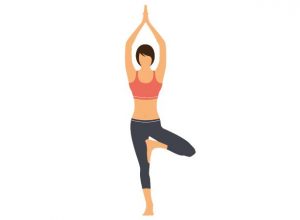
Good for the spine and muscle coordination, this pose increases stamina and focus, and relaxes the nervous system.
1. Stand very straight with your feet together and your arms beside you. Bend your right knee slightly and then lift your right leg to place your right foot as high as you can on your inner left leg. The sole of your right foot should be completely flat against your left thigh.
2. Once in position, breathe and balance. Then, raise your arms above your head and place your palms together. If you find it hard to balance, fix your gaze on something in the middle distance.
3. After a few slow breaths, gently lower your arms and release your leg. Repeat with the other leg.
Matsayasana ( Fish pose)
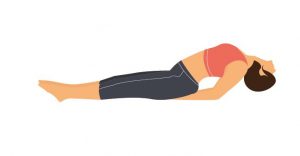
This exercise strengthens your core and improves digestion. It can help prevent constipation, and relaxes the shoulders and neck, as well as regulating breathing and stimulating the parathyroid gland (this controls the calcium levels in your body).
1. Lie flat on your back, making sure your legs are together and your hands are comfortably beside your body. Place your palms face down, under your hips.
2. Now, bring your elbows closer to each other by placing them close to your waist. Cross your legs so that your feet cross each other at your middle, and your thighs and knees are placed flat on the floor. Breathe in and lift your chest up, tilting your head back. Make sure the weight of your body is on your elbows and not on your head. Hold the position only until you are comfortable. Breathe normally.
3. When you’re ready, exhale and release the position, lifting your head first, and then dropping your chest to the ground. Uncross your legs and relax.
Tadasana (Mountain pose)
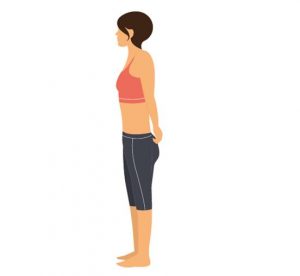
This pose increases awareness, relieves tension and improves blood circulation. It also energises and harmonises the body and mind.
1. Stand with your big toes touching, with your heels slightly apart. Tense your thigh muscles and lift your knee caps, but keep your stomach muscles relaxed.
2. Breathe in, and stretch your shoulders, arms and chest upwards. You can raise your arms beside your body or in front of your chest. Lift your heels and place your weight on your toes.
3. Feel the stretch throughout your body and hold the pose for a few seconds, or as long as is comfortable. Then exhale and release your body gently.
Bhujangasana (Cobra pose)
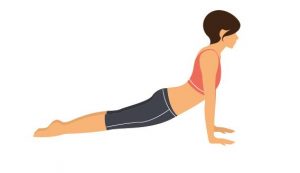
This pose stimulates and improves digestion and circulation, as well as opening up the lungs, reducing stress and tension. Plus, it can stimulate the core and boost your energy levels.
1. Lie flat on your stomach. Place your hands to your sides and ensure that your toes touch each other.
2. Move your hands to the front, making sure they are at shoulder-level, and put your palms on the floor. Place your body’s weight on your palms, inhale and raise your head and trunk. Note that your elbows should be bent. Arch your neck backwards, making sure your shoulder blades are firm, and your shoulders are away from your ears. Press your hips, thighs, and feet to the floor.
3. Hold the asana (pose) for about 15 to 30 seconds while breathing normally. Feel your stomach pressed against the floor. With practice, you should be able to hold the asana for up to two minutes. To release the pose, slowly bring your hands back to the sides. Rest your head on the ground by bringing your forehead in contact with the floor. Place your hands under your head. Then, slowly rest your head on one side and breathe.
Utkatasana (Chair pose)
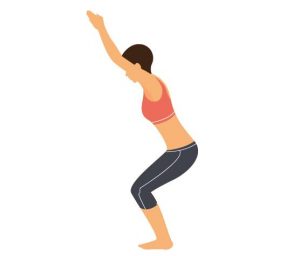
Increase strength, energy and balance with this pose. It can also stimulate the heart, and massages the abdominal organs.
1. Stand with your feet apart. Stretch your arms forward, ensuring that your palms are facing downwards, with your arms and elbows straight.
2. Gently bend your knees and push down your pelvis, as if you were to sit in an imaginary chair. Make yourself comfortable and be aware of your body and breathing as you hold the pose. Keep your spine lengthened. Calm your mind, relax and smile. Hold the pose for up to a minute.
Padangusthasana (Big toe pose)
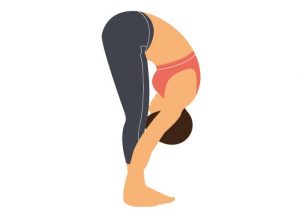
Use this pose to relieve stress and anxiety and improves digestion. It can also help to achieve deeper, more restful, sleep.
1. Stand with your feet parallel and at least 15cm apart. Your legs should be straight and your thigh muscles contracted.
2. Bend forwards, moving your head and torso together, aiming to touch your knees with your forehead. Grip your big toes with your hands. Now inhale and lift your torso, remembering to straighten your elbows.
3. Repeat this exercise several times, remembering to breath constantly and keep your torso straight as you bend.
Trikonasana (Triangle pose)
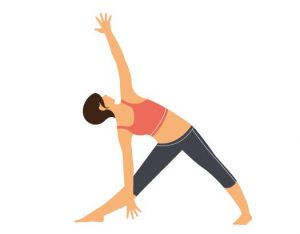
This pose can not only improve circulation and lower blood pressure, but it can also calm the mind and help reduce stress.
1. Stand with your legs wide apart, with your right foot at a 90-degree angle outwards and your left foot at 15-degree angle inwards. Your right heel should be aligned with the arch of your left foot. Balance your weight equally between your feet.
2. Take a deep breath and, as you exhale, bend your body to the right from below your hips, ensuring your waist is straight. Lift your left hand up and let your right hand touch the ground. Both your arms should form a straight line. Rest your right hand on your shin, ankle, or outside of the right foot on the floor. Make sure you do not distort the sides of your waist. Your left arm should be stretched out towards the ceiling and in line with the top of your shoulder. Let your head sit in a neutral position or turn it to the left. Your body should be bent sideways, and not backward or forward. Your chest and pelvis should be wide open. Stretch to the fullest and take deep, long breaths.
3. Inhale and come up. Drop your arms to your side and straighten your feet. Repeat the same using your left leg.
Swami Purohit has more than 40 years’ experience in the yogic disciplines of meditation, hatha yoga and mantra (swamipurohit.com/en).





















